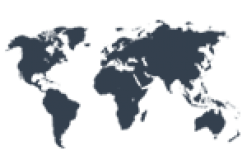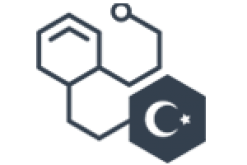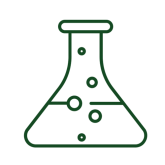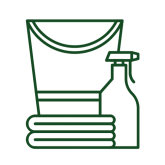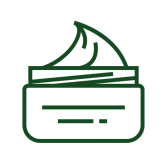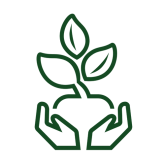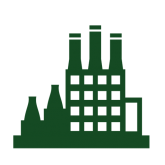WHAT ARE THE STRICTLY CONTROLLED CONDITIONS THROUGHOUT THE LIFE CYCLE OF A SUBSTANCE?
Content addition date : 13-06-2025
The KKDİK Regulation and the "Intermediates Guide" define strictly controlled conditions as “a set of technical measures supported by operating procedures and management systems.” One of the most important of these measures is to keep the substance strictly in closed systems by technical means throughout its life cycle (production, purification, use, etc.).
So, which steps does this life cycle cover?
- Normal operations (including loading and unloading)
- Cleaning and maintenance
- Sampling
- Control of emissions to the environment
Normal Operations (Including Loading and Unloading)
What strict control conditions must be applied during normal operations in the production and use of intermediates?
- Effective monitoring of the production process using technical equipment,
- Implementation of methods and control technologies that minimize emissions and consequently exposure,
- Existence of a management system including training and supervision of personnel.
To eliminate the possibility of human and environmental exposure during all processes until the intermediate completely converts into another substance, the process must be carried out in a fully closed system. So, what should be considered to maintain this closed system during transportation?
- Technical measures such as glove boxes, closed systems, double valves, vapor recovery, vacuum transfer, and dry connections must be used to minimize exposure during loading and unloading.
- Containers, pipes, pumps, and equipment should be designed to keep the substance closed throughout the process; the closed system must be maintained even during connection operations. Operations outside technical control are not considered strict containment.
- Emissions that may occur to the environment during the process must be minimized as much as possible.
- Residual emissions during sampling and maintenance must be minimized using appropriate methods and technologies; precautions must be determined according to the substance’s characteristics.
- Personnel working with the intermediate must be properly trained and supervised. This process should be conducted with a planned and documented program.
Cleaning and Maintenance Procedures
Article 18(4)(d) of the KKDIK regulation requires special procedures to be applied before the system is opened or entered for cleaning or maintenance. The goal before cleaning is to remove all traces of the intermediate as much as possible before cleaning and maintenance stages, thus minimizing exposure to the intermediate. How can this be achieved?
- Emptying the facility
- Cleaning the interior of the facility with an appropriate gas (nitrogen or steam)
- Washing with a suitable liquid (e.g., water)
- Treating with substances that chemically degrade the intermediate, then washing
- Applying high temperature to break down the intermediate, then washing
Before cleaning, monitoring systems must verify that no intermediate remains in the isolated section of the facility. Generated wastes must be collected in fully closed systems and disposed of appropriately.
To ensure safe operation of the facility during cleaning and maintenance:
- “Work permit procedures” must be implemented
- The number of workers with access must be kept to a minimum
- Personnel must be competent, qualified, and specially trained for their duties
- A “safety method statement” must be prepared for each task
What should be included in this safety statement?
- Description of the work to be done
- Work sequence and method
- Identified risks
- Required skills
- Precautions to be taken
- Reference safety procedures
- Isolation and other safety steps
- How waste will be disposed of
- Facility condition after work completion
If residues remain after cleaning, the use of appropriate PPE is mandatory.
Is the Sampling Process Included in These Conditions?
According to Article 18(4)(a) of the KKDIK regulation, the intermediate must be kept strictly in closed systems by technical means throughout its life cycle. This directly includes the sampling process. Sampling in a process is generally conducted at the following stages:
- Sampling from the intermediate as raw material—to verify substance purity. Samples can be taken from each barrel or tanker load.
- Sampling during the reaction to verify conversion rate or extent of the reaction.
- Sampling from the final product to check for intermediate residues or whether they are within the required limits.
How Is Control of Emissions to the Environment Ensured?
If strictly controlled conditions are applied, the release of the intermediate to the environment should be minimized. Mere compliance with environmental regulations is not sufficient. Under strictly controlled conditions, the following should be considered:
1. Solid Substances
- Emissions are controlled by exhaust ventilation systems
- Air is first passed through a cyclone filter, then directed to a bag filter
- Filters are replaced using special procedures with appropriate PPE
- Efficiency of all filtration systems must be documented
2. Liquids (Organic) and Gases
- Gases generated during sampling, loading/unloading, laboratory operations, and cleaning are sent via closed pipes to the facility’s incineration unit
- Combustion temperature and duration must be sufficient to break down the chemical structure of the intermediate
Water (Wastewater)
- Contaminated water is pre-treated with steam, then sent to the treatment plant
- If recoverable, it is recycled back into the process
- Chemical oxidation and biological treatment may be applied
- Treatment sludge is incinerated as hazardous waste
- Treatment effluent is regularly analyzed; discharge is stopped if residues exceed limits
- Steam stripping can be applied before recycling
- If residue risk exists, water is pre-treated and resulting gases are incinerated
How Should Waste Be Managed?
Throughout the life cycle of the intermediate—from production to conversion into another substance—various wastes may arise:
- Production residues (by-products not marketed)
- Waste from maintenance and cleaning
- Waste from other auxiliary processes
How should these wastes be managed?
- Waste collected in closed barrels
- Liquid wastes collected by tankers
- Solid wastes collected in special containers
- Final disposal of wastes
For detailed information on the operations your company must carry out under strictly controlled conditions, please contact CRAD.


